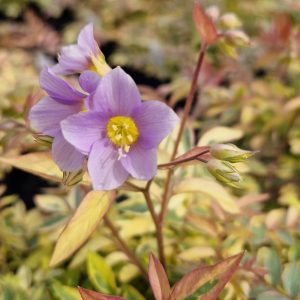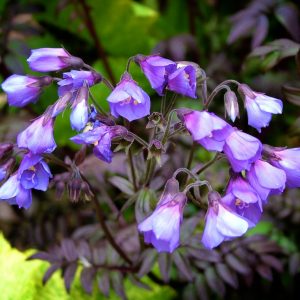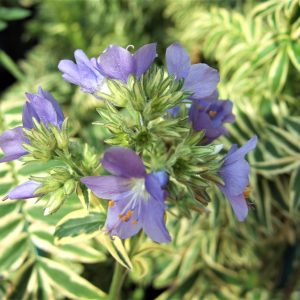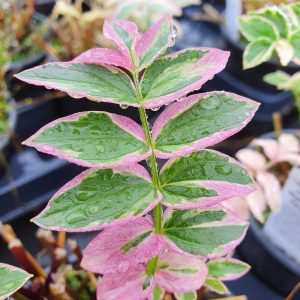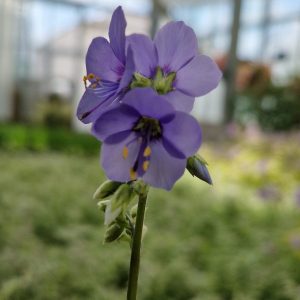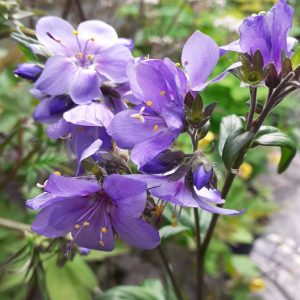Polemonium, commonly known as Jacob’s ladder, is a delightful perennial known for its unique, ladder-like foliage and clusters of flowers. Follow these guidelines to ensure a successful planting and thriving Polemonium in your garden:
Choosing the Right Location
Sunlight: Polemonium prefers partial to full shade, making it an excellent choice for woodland gardens or areas with filtered sunlight.
Soil: Plant in well-draining, moist soil rich in organic matter. Polemonium adapts well to various soil types but thrives in slightly acidic to neutral soil.
Planting Time
Spring or Autumn: Plant Polemonium in the spring or autumn when the soil is workable, and temperatures are moderate. This allows the plant to establish a strong root system before extreme weather.
Planting Procedure
Digging the Hole: Dig a hole that is slightly larger than the root ball of the Polemonium.
Positioning the Plant: Place the plant in the centre of the hole, ensuring that it sits at the same depth as it was in its nursery container.
Backfilling: Fill the hole with soil, gently tamping it down as you go to remove air pockets.
Watering: Water thoroughly after planting to help settle the soil and encourage root establishment.
Watering
Consistent Moisture: Keep the soil consistently moist but not waterlogged, especially during dry periods. Apply a layer of mulch around the base to help retain moisture.
Mulching
Organic Mulch: Apply a layer of organic mulch around the base of the plant to suppress weeds, retain soil moisture, and regulate temperature.
Fertilisation
Balanced Fertiliser: In early spring, apply a balanced, slow-release fertiliser to provide essential nutrients. Follow package instructions for application rates.
Pruning
Deadheading: Remove spent flowers to encourage additional blooms and maintain a tidy appearance.
Cutting Back: Trim back the foliage if it becomes leggy or after the main blooming period to encourage a bushier habit.
Support (if needed)
Staking: While Polemonium is generally sturdy, tall varieties may benefit from staking to prevent bending in windy conditions.
Division
Every Few Years: Divide established clumps every few years in the spring to rejuvenate the plant and maintain vigour.
Winter Care
Mulching in Autumn: Apply a layer of mulch around the base of the plant in the autumn to protect the roots during winter.
Pest and Disease Management
Monitor Regularly: Keep an eye out for pests such as aphids or leaf spot diseases. Treat issues promptly with environmentally friendly methods.
By following these planting and care guidelines, you can enjoy the beauty of Polemonium in your garden for years to come. Adjust care practices based on your local weather condition and specific Polemonium variety.



